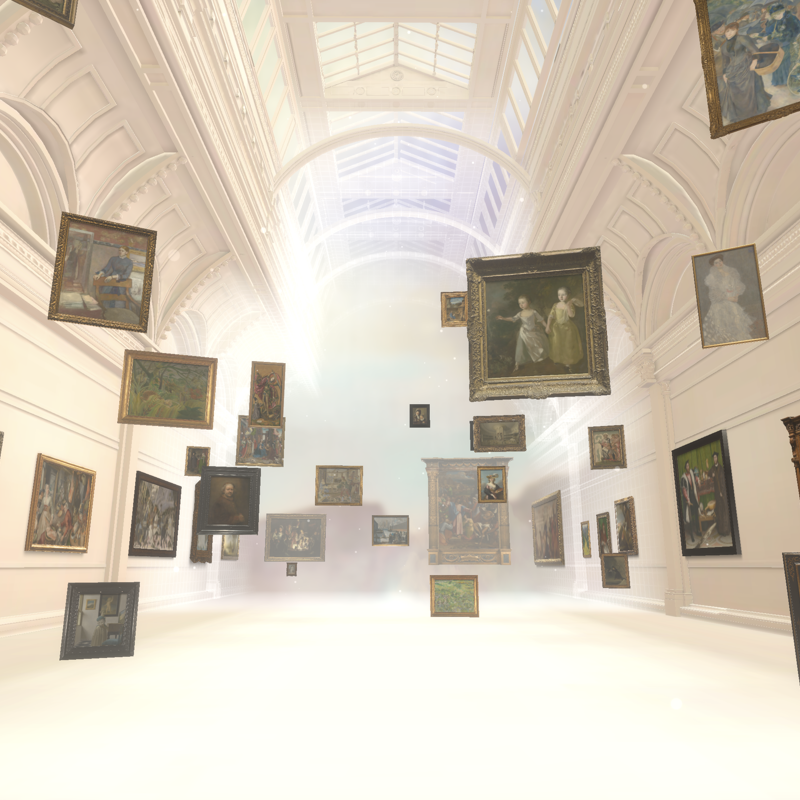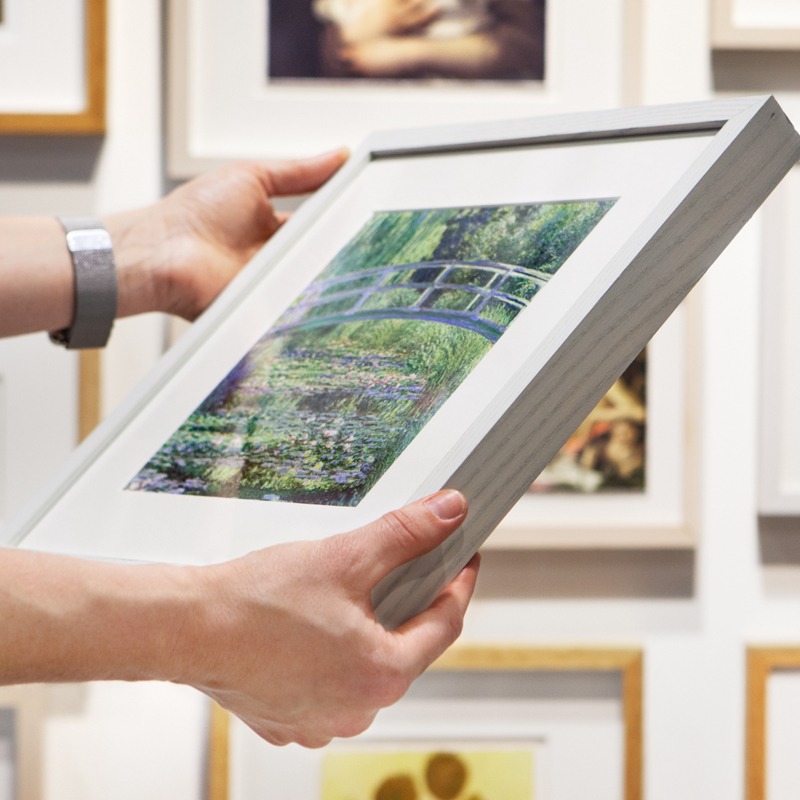George Bellows, 'Men of the Docks', 1912
About the work
Overview
Positioned on the waterfront of the East River, we are looking across the partly frozen river towards the tall buildings of Lower Manhattan. The warehouse in shadow on the left and the massive hull of an ocean liner on the right form two powerful diagonals that meet at the sunlit Manhattan skyline, which rises from the water like a cliff face.
Seen from a relatively low vantage point, the warehouse, liner and skyline form three sides of a box, the fourth wall of which is formed in part by the group of longshoremen, who are most likely waiting to unload the liner. By placing the men against the Manhattan skyline, Bellows ironically contrasts the dynamic centre of modern capitalism with the harsh reality of the people whose labour kept it functioning.
When bought by the National Gallery in 2014, this was the first major American painting to enter the collection.
Audio description
Listen to an audio description of George Bellows's 'Men of the Docks'
Transcript
This is a description of 'Men of the Docks', by George Bellows, a landscape painted in 1912. About 110cm by 160cm, this powerful painting is done in oils. It shows a view of New York from the waterfront, across the River to the skyline of Lower Manhattan, glittering in the sharp light of winter. Executed with rough but luscious brush strokes, Bellows almost carves his impression of the scene. He layers the paint thick and solid, so it glistens, as if still wet.
In the right foreground are nine men, standing around in thick, heavy overcoats, boots and soft brimmed hats in dark colours. Most of them are looking towards the left at something happening outside the painting. Two of them have their backs to us, leaning over railings at the edge of the water, one of them wearing a bright blue jumper which stands out against the almost monochrome scene.
These are longshoremen, waiting for the possibility of work hauling cargo on and off the huge steam ships, transporting, coffee, tea, and coal to the US and beyond. To the far right of the men are two large, white cart horses, in thick leather harnesses.
On the left is the wall of a large warehouse, extending away from us out over the river, the rest of the building cut off by the left edge of the painting. A tug boat is moored alongside, it’s stern towards us. The warehouse is a dark grey-blue, a brooding shape above the pale icy water. It contrasts with the monumental bright, white bulk of one side of a steamship on the right, which like the warehouse, is cut off by the painting’s edge. Two squat vessels are alongside - another tug boat, and behind that a boat with a funnel, spewing out dirty smoke from its tall black chimney.
In the left foreground, in the shadow of the warehouse, a solitary figure is turned away from the other men. His shoulders are hunched, head down.
On the far side of the river, hazy skyscrapers in soft tones of beige and grey, rise into a pale snow filled sky, at their foot the low shapes of rough slums. Towards the right, just visible through the smoke from the boat, is the high dome of the Singer Sewing Machine Building, one of the tallest architectural triumphs of New York. And to the right of that, the towers of the Brooklyn Bridge.
Bellows wants us to be in no doubt as to where we are, in the great glory of the fastest growing City in the world – New York. But more than that Bellows is showing us the stories of emigrant workers .
Ordinary people were the focus of the Ashcan painters of which Bellows was one, a political group of artists who were concerned to reveal the contrast between the haves and the have-nots. Bellows painted this from sketches he made on the Dock side, documenting the reality of the harsh existence of manual workers. We know he made this painting in January and February of 1912 and ensured it was exhibited in the March and April of that year, in the prestigious National Academy of Design. His interest in ships and shipping were fueled by the hysteria of the impending arrival of the Titanic, supposedly the most luxurious, decadent celebration of opulent life, due to dock in New York on the 15 April. It was a spectacle of luxury that contrasted powerfully with the grim and brutal existence of the workers, who were driving the burgeoning economy and the great capitalist American dream.
Key facts
Details
- Full title
- Men of the Docks
- Artist
- George Bellows
- Artist dates
- 1882 - 1925
- Date made
- 1912
- Medium and support
- oil on canvas
- Dimensions
- 114.3 × 161.3 cm
- Acquisition credit
- Bought with a grant from the American Friends of the National Gallery, made possible by Sir Paul Getty’s fund, and by a donation from Mark Getty KBE, 2014
- Inventory number
- NG6649
- Location
- Room 45
- Collection
- Main Collection
- Frame
- 21st-century Replica Frame
Provenance
Additional information
Text extracted from the National Gallery’s Annual Report, ‘The National Gallery: Review of the Year, April 2013 – March 2014’.
Exhibition history
-
2018Loan to the Barber Institute of Fine ArtsThe Barber Institute of Fine Arts23 March 2018 - 9 September 2018
Bibliography
-
2014National Gallery, The National Gallery: Review of the Year, April 2013 - March 2014, London 2014
About this record
If you know more about this work or have spotted an error, please contact us. Please note that exhibition histories are listed from 2009 onwards. Bibliographies may not be complete; more comprehensive information is available in the National Gallery Library.


